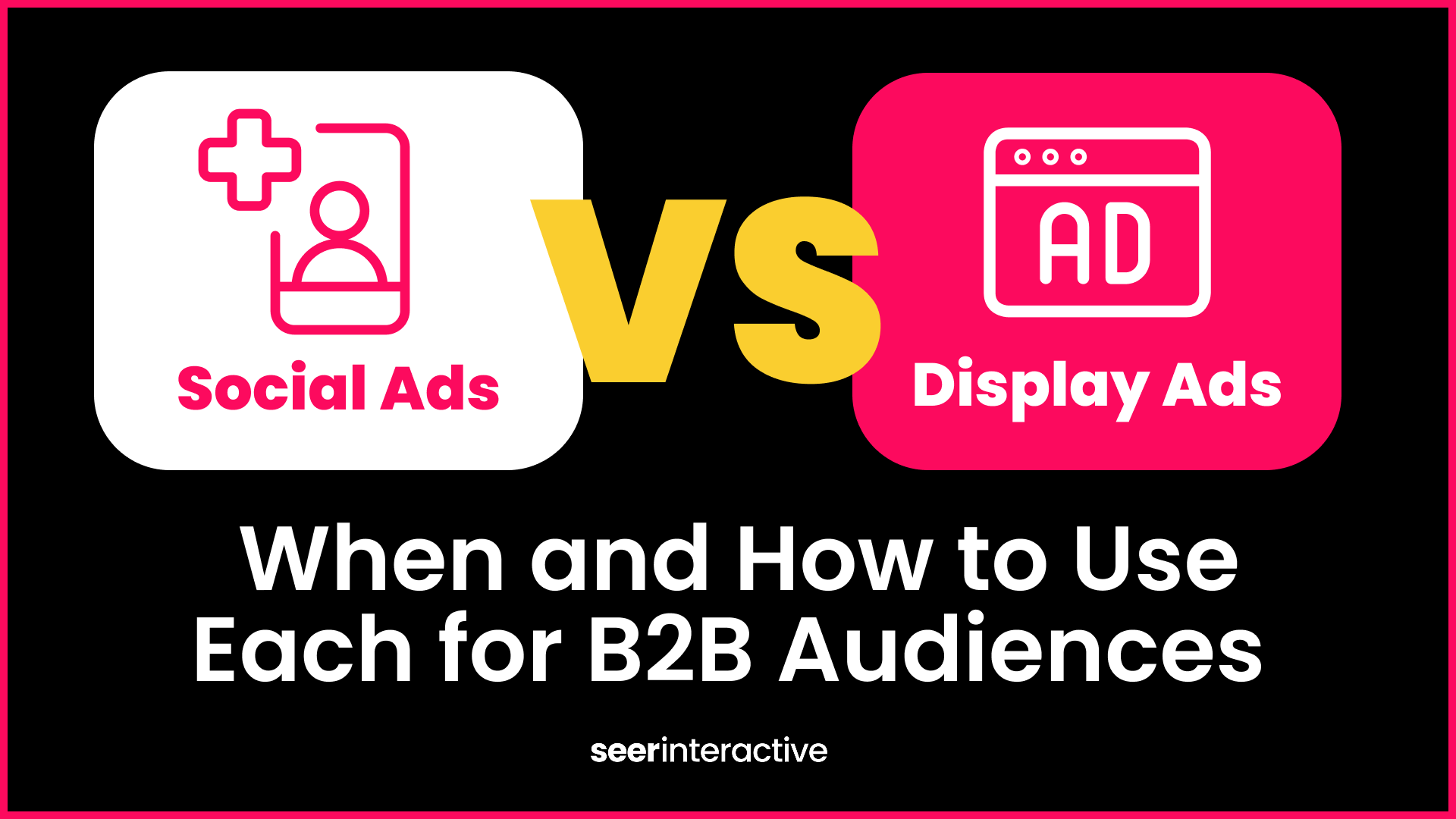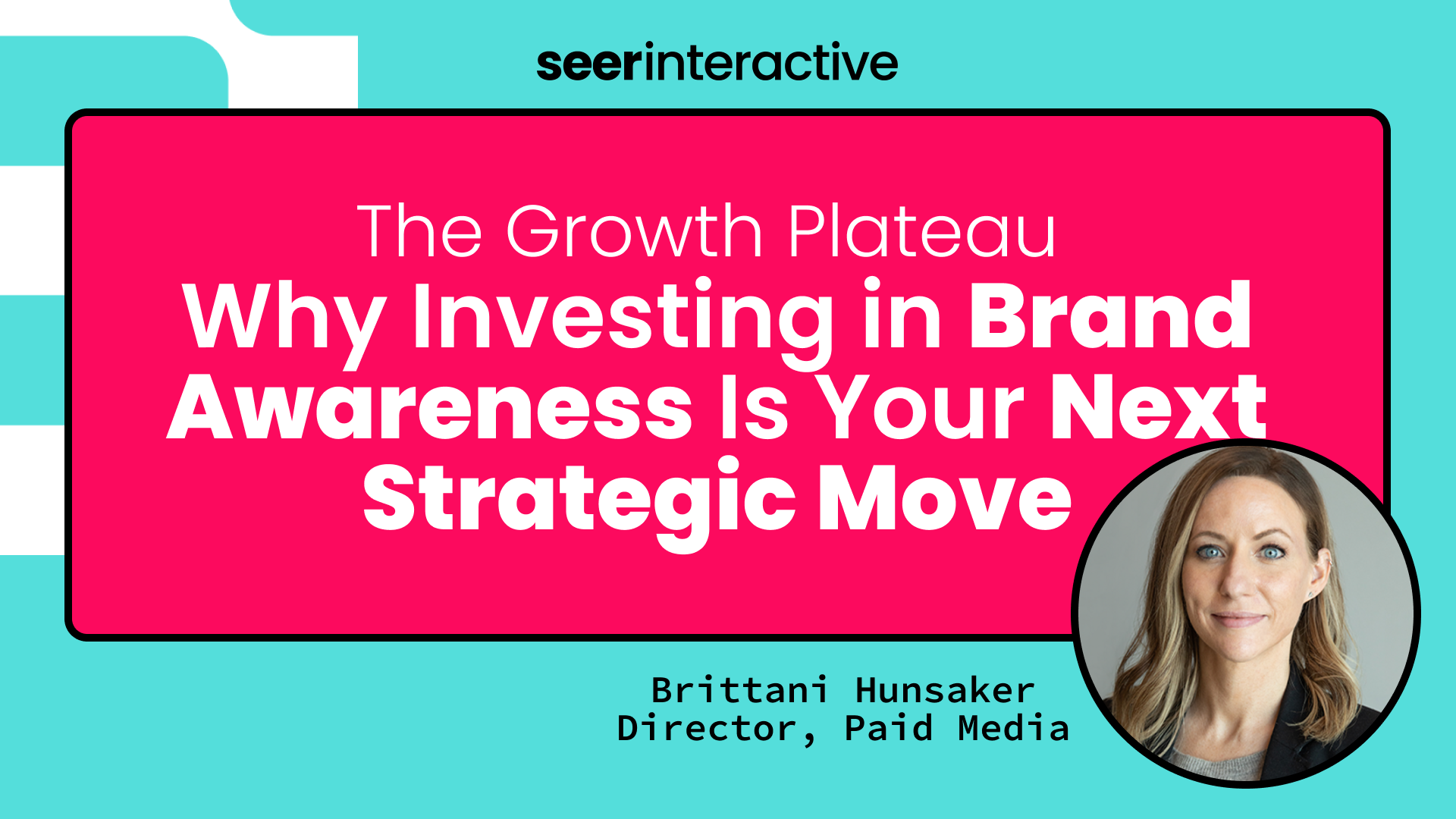Post was originally written by a Seer Alumni in April 2020. Updated in April 2023 by Nicole Velasco.
Table of Contents:
- Targeting Options
- Campaign Objectives
- Types of Twitter Ads
- Branded Assets
- Best Practices for Twitter Ads
Twitter has 368 million active users . WIth this huge audience, it makes Twitter a great platform to include in your media mix.
According to a report by Nielsen Brand Effect, advertisers who use three or more different ad formats increase campaign awareness by 20% and purchase intent by 7%. This is especially beneficial to e-comm clients launching a new product or initiative.
This post can help you determine the most effective ads for your marketing goals.
Before we look at the types of Twitter ads available, let’s take a deep dive into Twitter’s targeting capabilities.
Twitter Ads Targeting Options
Twitter offers advertisers a wide variety of targeting capabilities for prospecting and remarketing audiences. For both types of audiences, demographic targeting is available.
Demographic Targeting
In ads manager, geographic location is the first option advertisers see. Advertisers can geographically target based on the following dimensions.
-
Country / Countries
-
Regions
-
Metros
-
Cities
-
Zip Codes
-
Radius around a specific location.
You may be asking yourself what is the benefit of micro-targeting something as small as a zip code or a radius around a specific location? Let’s say you’re a national pizza chain that just opened a new location. As part of the grand opening, you offer local customers $6.99 for two large pizzas. Most people wouldn’t travel more than two miles for pizza. You can build this audience with just a zip code.
Following the pizza chain example, what if you only want to target college-age boys because the grand opening is in-line with a big fraternity bid day? You can also target based on gender identity, language spoken and age.
Speaking of specific targeting advertisers can even go as detailed as a user’s device and carrier. This can be beneficial for the pizza chain that may want to increase app downloads for Google Pixel 6 and 7 users.
Audience Targeting
Here is where targeting is going to divulge a bit depending if this is for a prospecting audience or a remarketing audience.
For prospecting audiences, advertisers can also target based on interest such as topics, movies, and TV shows. Another one of the most unique targeting capabilities of Twitter's Ads Manager is that you can target a lookalike audience based on a verified Twitter User’s profile. What does this mean?
What if you were an indie game company and you wanted to target streamers to review your game. You can create a lookalike audience based on users who follow @Twitch (a streaming platform) and/or @NintendoAmerica (a video game company). To segment this prospecting audience further, you can add additional demographic information to get more detailed.
For your remarketing audience, you can use demographic information combined with custom audience targeting. This can include your customer list uploaded into the platform, website activity, app activity, and engaging with organic posts.
These same parameters can be used for audience exclusions.
[TIP] Unless you are doing a creative test, avoid targeting the same audience at the same time. This can lead to cannibalization and drive up your costs.
Twitter Campaign Objectives
There are several objectives you can choose from on Twitter to reach your goals, and to identify which Twitter ads are right for you.
These are the current objectives available:
-
Reach
-
In-Stream Video Views
-
Video Views
-
App Installs
-
Website Clicks
-
Engagements
-
Followers
-
App Re-Engagements

Twitter Ads Manager
Source: Twitter
Once you have an idea of the targeted approach you’re going to take, and the objective to get you to your goal, you now have to decide what type of ad type will get you to your goal.
Twitter Ad Formats
Twitter ads are known as promoted ads in-platform. All promoted ads are labeled as ‘promoted’.
Promoted Video Ads
Promoted Videos will allow you to show a video of your choice on Twitter, targeted to an audience of your choice. Promoted videos are great for brand awareness and consideration. We’d recommend keeping these videos 15 seconds or less to keep users engaged until the end (remembering that Twitter is the platform people turn to for quick information.
Promoted Videos are billed on a CPV, CPE and CPM model depending on your execution.
If you’re running TV spots, align your Twitter video messaging to what is currently running on television. This will ensure your message is consistent across channels, improving engagement.
Promoted Video will come in few different ways:
-
Promoted Video -A video accompanied with 280 characters of copy, found within a user's timeline.

-
In-Stream Video Ad -Videos that run within content that is already being consumed by the user, accompanied with 280 characters of copy.

-
In-Stream Video Sponsorship - An exclusive Twitter sponsorship where you buy the media direct, accompanied by a 6 second video.

-
First View -A Twitter ad package that allows for mass branding for 24 hours. This will be a flat fee model and you need to work with a Twitter representative to get this buy set up and run.

- Promoted Live Video - Broadcast a live moment to the Twitter world. This is a costly option, at a $500k minimum. However, if you have the budget, it can help amplify a product release and/or service.

In order to get the best performance from promoted video ads, it’s important to communicate the value of your ad immediately and optimize your promoted video ads for mobile. 90% of promoted video views are on mobile devices.
Website Card
Website cards are great for generating traffic to your website, app or chatbot, and aligns to the consideration objective noted above. Website cards are billed based on a CPC, CPE or CPM model. Website cards can also house videos, which would then be billed based on a CPV model.
Website cards come in a variety of forms:
-
Website Card - Drive traffic to your website or take action, which is accompanied by an image (or video) and 280 characters of copy.
-
Conversation Card - Users can engage and create conversation with your Tweet to their followers. This is accompanied by 280 characters of copy and is recommended to include a hashtag to join the conversation you wish to expose your brand to.

-
Direct Message Card - This option is best for promoting your chatbots for easier access to your customer service. This is accompanied by 256 characters of copy and 24 characters for your CTA.

- Tweet to Unlock - This is another option that is similar to the conversation card where users will prompt users to Tweet your hashtag and/or brand to their followers.

- App Card - Find new users, or re-engage users to your app in the app store. You can use either an image or video to promote within this option. This card is accompanied by 280 characters of copy.

Promoted Tweet
Promoted Tweets come in a variety of forms:
-
Promoted Text - This option is a great way to join the conversation by promoting just text. It’s recommended to include a hashtag for max visibility. If you’d like to use a link in the tweet, make sure to shorten the link, as the entire link takes up characters (up to 280 characters). This option is not accompanied with an image or video.

-
Promoted Image - Promoted Images are similar to the tweet mentioned above, but with an image included.

- Promoted Account - Is your goal to increase your social following? Then this is the card for you. Target users that are not already following your account to increase your follower count. We recommend using similar audiences to your current followers. Create engaging first-touch content that would make users want to follow you with one simple click on your “follow” button.

- Promoted Poll - Interactive polls on your tweets which can either be a tweet alone, with an image or with a video. Make these polls helpful for your brand, but also engaging for your target users. If you can try and make the poll relevant, even better!

Branded Assets
Branded assets are as follows:
-
Branded Emojis - These are custom made emojis for your brand that are triggered whenever a specific hashtag is used.
-

-
Promoted Moments - This is the avenue you can take if you wanted to tell a story beyond just the 280 characters of text. It will be a collection of tweets that is displayed in a canvas like experience, which makes your tweet a bit more engaging for the user.
-
Brand Reminders - This is similar to an opt in to receive more information from a company via your cell phone, but directly from an ad in Twitter. If the user likes your CTA, they will be opted in to receive more information about your business.
-
Promoted Trends - Promoted trends will populate pretty high in your feed on Twitter. Your brand can own a “trend” for 24 hours, to maximize exposure for your brand. These are a flat fee, and can be purchased through a Twitter rep.

- Promoted Trend Spotlight - These are found in the explore tab, and utilize a video format. It’s basically a takeover unit at the top (similar to a YouTube takeover) but for the social app. Similar to Promoted Trends, these are a flat fee and can be set up with your Twitter rep.

Best Practices for Twitter Ads
Twitter spoke to their account managers and ad managers to learn best practices that can help advertisers achieve success on their Twitter ads campaign. Here’s what they published.
First, let’s look at the page copy. Make sure the Tweet is simple and has a clear message. Besides copy length, it’s important to have a strong call-to-action in your copy. One final copy recommendations is to avoid using #hashtags and @mentions in promoted tweets. This gives your audiences the opportunity to click away from your content.
Second, make sure your visuals are eye-catching. 97% of people focus on the visuals on Twitter. That being said, a strong image isn’t the only thing that is effective. You need to make sure that it correlates with your copy.
Third, run multiple tweets and have different creative. The sweet spot is 3-5 different ad formats within an ad campaign. This combination drove brand lift, increased campaign awareness and purchase intent.
Final Thoughts
Overall, leveraging Twitter Ads is advantageous for any business wanting to join the conversation within their industry and stay top of mind for potential customers.
Want to explore how to leverage Twitter Ads with the team at Seer? Let's chat!



